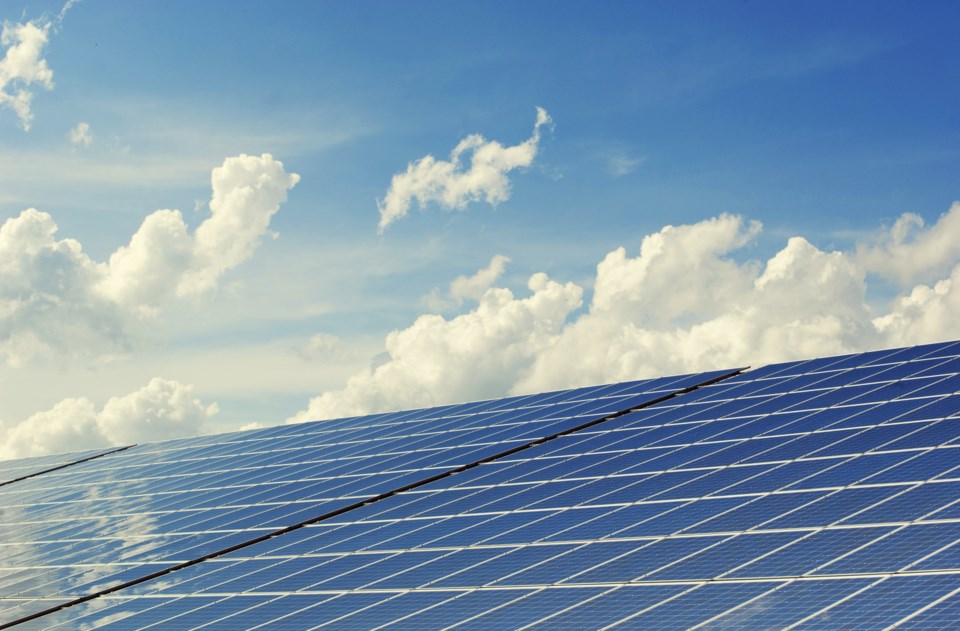His remote community is indeed an isolated one.
But Fort Severn First Nation Chief Paul Burke believes it has the ability to be a trendsetter.
A step in this direction was taken recently as the First Nation completed a 300-kilowatt solar farm, which will not only help provide clean energy to the community but also alleviate some of its dependence on diesel fuel.
The current project, which cost about $1.8 million to construct, will translate into as much as a 20 per cent reduction on diesel reliance for the First Nation.
It is estimated the current project alone will reduce the amount of diesel being brought into the community by about 400,000 litres each year. That translates into a savings of about $360,000 annually.
Additional solar and wind projects to further reduce diesel consumption are already being discussed in the community.
“That’s my dream, to be the first community totally reliant on clean energy,” Burke said.
Fort Severn is the most northern First Nation in Ontario. It is located about 850 kilometres north of Thunder Bay.
Burke is hoping other First Nations, as well as other non-Indigenous communities, take note of what his community has been able to accomplish.
“If we can do this up here, we can replicate it anywhere in the world,” he said.
Michael Wrinch, the principal engineer at Hedgehog Technologies, is among those who are thrilled this initial solar farm has now been completed on Fort Severn First Nation.
Wrinch, who managed the project, began working for the First Nation a decade ago when he developed their community energy plan. He spent time in the First Nation assessing what their energy needs were and how energy was being used at the time.
One of the recommendations Wrinch made to the First Nation was to explore solar options.
This advice was offered because Fort Severn is such a remote First Nation. As a result, there are only three options to bring diesel into the community.
One is by barge. But as community members found out a few years back, if the barge does not run, then other methods have to be considered.
There’s also an ice road that comes to the community. But that is only open about a half-dozen weeks of the year. And only if it is cold enough.
Fort Severn First Nation is also a fly-in community. So, planes can bring in supplies but costs to do so quickly add up.
Work on the solar project had been underway when Burke was elected chief in 2016. But he felt the project was being mismanaged and then new sources of funding had to be sought.
Plus, some naysayers, including political officials, were telling him to abandon the project.
“The government was killing it off,” Burke said. “They were saying to bury this project and I kept saying no.”
Wrinch believes Burke’s persistence is what led to the solar farm becoming a reality.
“Without the leadership of Chief Burke, this never would have happened,” he said. “He was always saying ‘Don’t give up’ and ‘Try this’.”
Burke is pleased to be doing his part to address climate change and reduce greenhouse gas emissions.
“I’m an environmental buff,” he said.
It won’t just be community members who will benefit from Fort Severn’s solar farm. Polar bears are frequently seen in the First Nation where they produce their offspring. Since climate change is threatening their existence, Fort Severn’s solar farm will help their habitat.
“This is a feel-good story for the bears and for the community,” Wrinch said.
Fort Severn First Nation currently has a pair of generators that supply power, as well as a backup generator.
“It is basically turning off one of those generators,” Burke said of the solar project.
Burke expects the solar farm will be paid off in about 18 months. And then the First Nation can start concentrating on housing projects from the money it will be saving from the solar farm.
“That money is slated for housing and nothing else,” he said.
Wrinch is hoping to continue working with Fort Severn First Nation on additional energy ventures.
“These projects take a long time to get together,” he said. “We’ll try to do it as quickly as possible. But there are a lot of challenging things that can slow you down.”
Wrinch would love to help fulfil Burke’s wish of having the community entirely weaned off diesel.
“You can get to 100 per cent,” he said. “But you always want the diesel as a backup. It’s not always windy. And it’s not always sunny. Our goal though is to get to 100 per cent.”
Sam Laskaris is a Local Journalism Initiative (LJI) reporter for Windspeaker.com. The LJI program is funded by the Government of Canada.




